TL;DR
Smart landscaping projects can raise curb appeal and comfort while returning much of their cost at resale. Use this guide to choose outdoor upgrades with strong ROI, from lawn care to patios, and learn how to plan a drought-tolerant front yard that looks good year-round.
Introduction

Clean lines and layered heights create a welcoming, livable landscape that elevates home value and curb appeal.
A tidy, well-planned landscape can return a significant share of its cost at sale while improving daily livability. Buyers start forming opinions at the street, and clean lines, healthy plants, and welcoming outdoor rooms shift those first impressions in your favor. I walk a lot of front yards each season, and the yards that photograph best share the same bones: defined edges, layered heights, and a simple color story. Think of landscaping as exterior design, not yard chores. It is container gardening by the door for instant curb appeal, native landscaping for resilience, and backyard design that supports the way you actually live. Alt text: Garden walkway with light arches leading to a stone firepit at dusk. Caption: A framed path calms the eye and pulls visitors into the outdoor room. Meta description: Boost curb appeal and ROI with 10 landscaping projects, from lawn care to patios, with costs, returns, and smart tips for every climate.
From Curb Appeal to Comfort: How These Projects Connect
Projects that combine curb appeal, function, and low maintenance yield the most consistent ROI across regions. Recent industry surveys show that routine lawn care, basic landscape maintenance, and well-scaled hardscaping often recover much of their cost when you sell. Here’s why that matters. Outdoor investments are lifestyle decisions first. A new patio makes weeknights easier. A pollinator patch adds movement and sound. Landscape lighting extends your living room into the evening. Core keywords to keep in view: curb appeal planting up front, low-maintenance backyard garden ideas out back, eco-friendly yard practices like drip irrigation, and native landscaping for better survival in heat and drought.
Anecdote
During a spring walk-through in Minneapolis, a seller spent a weekend edging, mulching, and tucking pansies into porch planters. The listing went live Monday and, even before the tulips opened, the photos drew twice the traffic of similar homes on the block.
10 High-ROI Landscaping Projects, Ranked by Real-World Payback
01. Standard Lawn Care A 3,000-square-foot lawn on a seasonal program can visibly improve within 6–8 weeks and, in many markets, delivers one of the highest returns on investment. What it is: Six seasonal applications targeting nutrition and weeds on a typical front and back lawn. How it works: Balanced fertilizer restores color and density, pre- and post-emergent controls reduce broadleaf weeds, and consistent mowing height (generally 3 inches for cool-season turf, 2–2.5 for warm-season) encourages thick growth that crowds out invaders. In recent surveys, basic lawn care on a 3,000-square-foot yard cost around a few hundred dollars and was estimated to return roughly double or more at resale, depending on region and condition. The visual difference reads instantly in listing photos. How to try it:
- Set mowing height high and leave clippings to recycle nitrogen.
- Overseed thin cool-season lawns in early fall for better take.
- Edge along walks and beds to sharpen lines before photos.
- Use dark, shredded hardwood mulch for a clean, uniform look.
- Group perennials in 3s for impact; space 12–18 inches apart depending on spread.
- Prune shrubs after bloom to avoid cutting off next year’s flowers.
- Keep front paths at least 36 inches wide for comfort and ADA-friendly access.
- Choose a small tree with noninvasive roots, like Amelanchier or Japanese maple.
- Repeat one accent plant for rhythm on both sides of the walk.
- Site 10 feet from the house and 10 feet from combustibles for safety and smoke.
- Choose a 304 stainless grill head; it resists corrosion better outdoors.
- Add task lighting under counters and 3000K ambient lighting overhead.
- Pitch the surface 1/8 inch per foot away from the house for drainage.
- Select 60/40 mix of larger to smaller paver modules for a stable pattern.
- Border the patio with low plants 18–24 inches tall to soften edges.
- Keep deck boards at 3/16-inch gaps; they’ll tighten with seasonal swelling.
- Use stainless or coated screws to avoid black staining.
- Specify a 36–42-inch rail height per local code and view lines.
- Prune in dormancy for most species; avoid topping, which weakens trees.
- Maintain 10 feet of clearance from roof and chimney.
- Mulch tree rings 2–3 inches deep, never piled against the trunk.
- Split turf and beds into separate zones; water deeply but less often.
- Run drip at 0.5–1.0 gph emitters, spaced to root zones, not trunks.
- Install a smart controller with local weather data for auto-adjustments.
- Use 2–3 watts per fixture for path lights; less is more with LEDs.
- Cross-light focal trees from two angles to avoid harsh shadows.
- Place step lights every 3–4 feet for safe treads.
- Leave at least 3 feet of seat space around the feature for circulation.
- Choose a 36–42-inch round bowl for four to six people.
- Blend hardscape with native grasses to soften the circle of stone.
A Pause Between Projects
Every upgrade should work as a team with the house, the soil, and your climate. The beauty of modern landscaping isn’t perfection, it is participation. I’ve seen gardeners in Arizona trade thirsty lawns for decomposed granite, islands of cactus, and a mesquite for shade, and suddenly the yard matched the sky. In the Pacific Northwest, a simple rain garden caught roof runoff and added a seasonal chorus of frogs. These are small acts that add up to a more resilient, low-maintenance yard.
Visualize Your Yard Before You Dig
Before you plant a single shrub, map sun, slope, and sightlines so each dollar does more than one job. A quick mockup can prevent costly do-overs. Use a visual planning tool to test layouts, scale hardscapes, and play with curb appeal planting palettes. Platforms like ReimagineHome let you drop in patios, decks, and native plant masses, preview lighting at dusk, and compare backyard garden ideas side by side. It is like a dress rehearsal for your yard.
Visualization Scenario
Upload a daytime photo of your front yard to ReimagineHome and test three curb appeal planting schemes: a classic boxwood-and-hydrangea border, a native meadow strip with a stone path, and a contemporary gravel garden with low-voltage lights. Toggle dusk mode to see how each plan reads from the street at showing time.
FAQ: Landscaping ROI and Low-Maintenance Yard Design
What landscaping adds the most value to a home? Routine lawn care, basic landscape maintenance, and a well-scaled patio are consistently among the best return-on-investment landscaping projects. These upgrades boost curb appeal and buyer confidence. Is a patio or a deck better for ROI? In many regions, a paver patio returns slightly more than a wood deck, though both improve livability and listing photos. Choose based on grade, budget, and architectural fit. How much should I budget for an outdoor kitchen? A compact, durable outdoor kitchen often ranges from the high four to mid five figures, depending on appliances and stone. Well-built kitchens can recover a large share of cost in the right market. Does landscape lighting increase home value? Low-voltage LED lighting modernizes the facade and extends use after dark, but resale ROI is often lower than hardscaping. Homeowner satisfaction and perceived quality are typically very high. What is the best low-maintenance front yard? Native landscaping with drought-tolerant shrubs, ornamental grasses, and a simple mulch bed reduces water and pruning needs. Add container gardening at the porch for seasonal color. How can I make a drought-tolerant front yard look polished? Keep clean bed edges, repeat 3–5 species in groups, and use gravel or dark mulch as a consistent ground layer. Drip irrigation and a 2–3-inch mulch depth maintain a tidy, eco-friendly yard.
The Payoff You Feel Before You Sell
Landscaping ROI is real, but the immediate return is how the space feels on a Tuesday evening when the patio lights click on and the basil brushes your hand. The projects above balance curb appeal with durability and maintenance you can manage. Start with the quick wins—lawn care, a mulch refresh, crisp edges—then add one anchor feature that fits your climate and lifestyle. When the time comes to list, the photos will sing. Until then, you will have built an outdoor room that works as hard as any space inside your walls.
.svg)

.svg)

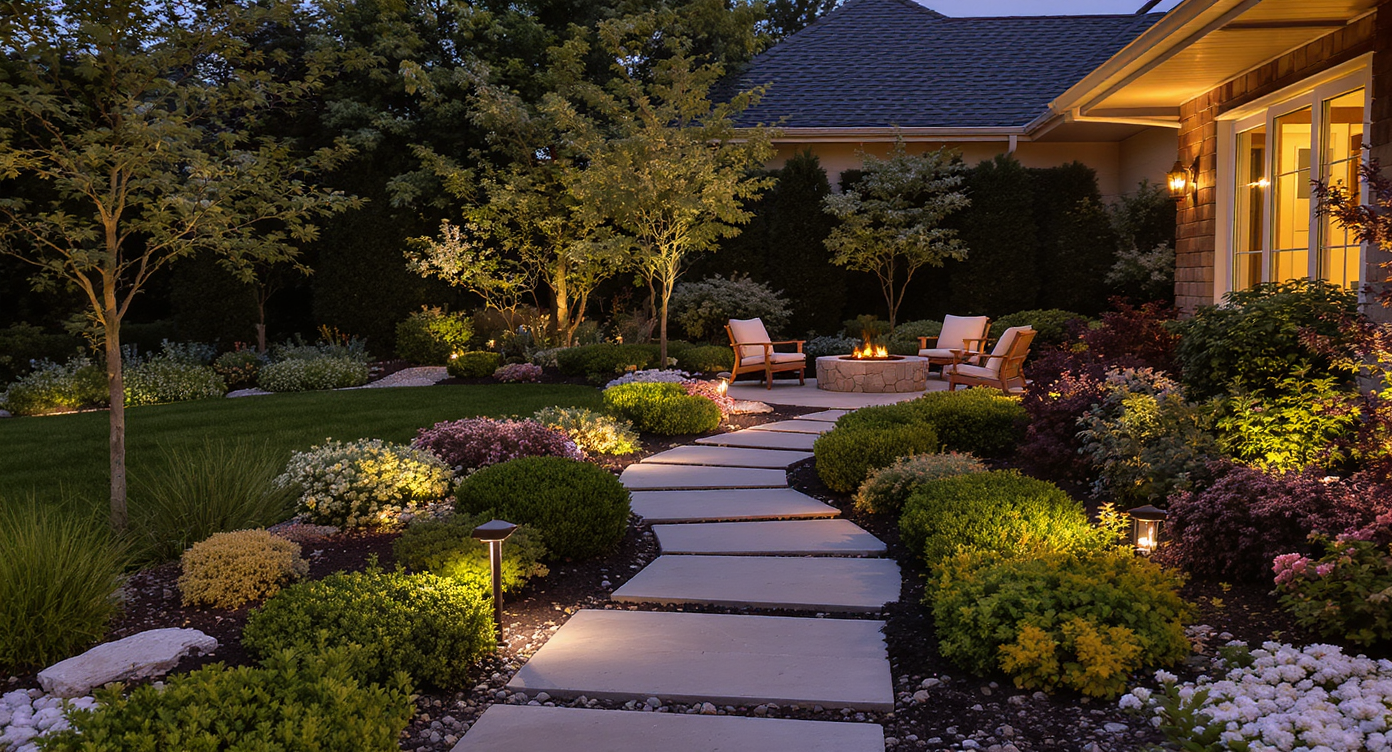

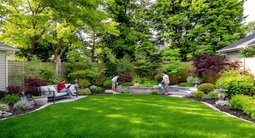
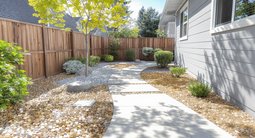
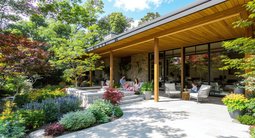
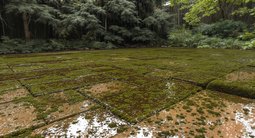
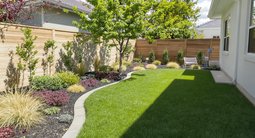
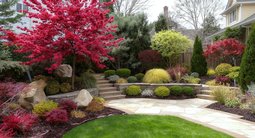





.png)